Geometry in Nature: the Fibonacci Sequence
Dr. Montessori noticed early on that children are instinctively attracted to geometry, in large part because everything in the natural world is geometric. As the child adapts to her world, she takes in impressions that are geometric. All natural symmetries are multiples of 2, 3, or 5. The same mathematical patterns or forms are repeated again and again; there is a logarithmic spiral at the tip of a fern leaf, which is the same spiral that is seen in a sea shell. The child observes such patterns around her from birth. In this way, these shapes are already a part of the child's unconscious mind, and thus attract her attention naturally. Below, how the Fibonacci Sequence presents itself in nature, and how it all relates to Montessori.
How amazing are the similarities between a plant (top) and an animal (above)?!
The Fibonacci sequence contains the numbers found in an integer sequence, wherein every number after the first two is the sum of the preceding two:1, 1, 2, 3, 5, 8, 13, 21, 34, 55, 89, 144, ...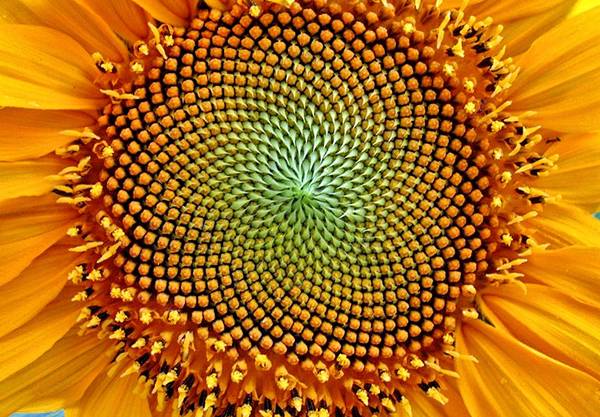 Their constant appearance in nature - such as branching in trees, the arrangement of leaves on a stem, the bracts of a pinecone, or the unfurling of a fern - make them a readily available math resource for young children. For parents with young children, a fun activity to do is to observe the spiraling seeds on the head of a sunflower or to count the petals on a daisy to see if they add up to a Fibonacci number (many sunflowers contain the number 89, or in some cases, 144). Or gaze into the center of a rose before it opens completely to observe the petals arranged in an elegant spiral shape.Seed heads and flower heads often use arrangements that are based on Fibonacci numbers because, as it turns out, that is the most efficient way of packing seeds, florets, or petals into a round arrangement while still allowing more of the seeds or florets to grow from the middle. Nature is just chock full of mathematics!
Their constant appearance in nature - such as branching in trees, the arrangement of leaves on a stem, the bracts of a pinecone, or the unfurling of a fern - make them a readily available math resource for young children. For parents with young children, a fun activity to do is to observe the spiraling seeds on the head of a sunflower or to count the petals on a daisy to see if they add up to a Fibonacci number (many sunflowers contain the number 89, or in some cases, 144). Or gaze into the center of a rose before it opens completely to observe the petals arranged in an elegant spiral shape.Seed heads and flower heads often use arrangements that are based on Fibonacci numbers because, as it turns out, that is the most efficient way of packing seeds, florets, or petals into a round arrangement while still allowing more of the seeds or florets to grow from the middle. Nature is just chock full of mathematics!
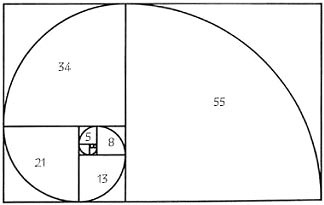 The Fibonacci sequence can also be see in the world's creatures. The nautilus shell is the most commonly referenced logarithmic spiral, and can best be observed through a cross-section of the shell's inner chambers.
The Fibonacci sequence can also be see in the world's creatures. The nautilus shell is the most commonly referenced logarithmic spiral, and can best be observed through a cross-section of the shell's inner chambers.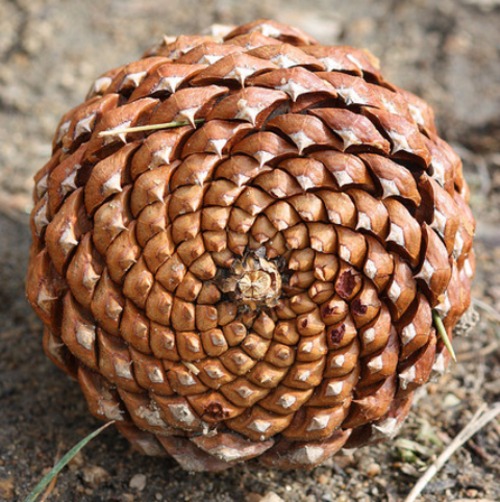
photo credit: gofituremath.org
The seeds of a pinecone twist in opposing Fibonacci spirals, and the interesting romanesco, a vegetable that also contains fractals (when you zoom in on each bump, it is made up of its own spirals, its spirals have spirals, and so on!) is a fantastic example of Fibonacci numbers in nature.
photo credit: gofiguremath.org
Plenty of creatures also contain this fascinating arrangement!
The next time you find yourself out on a nature walk, or even walking through the produce section of your grocery store, be sure to point out the wonder and beauty of Fibonacci to your child!

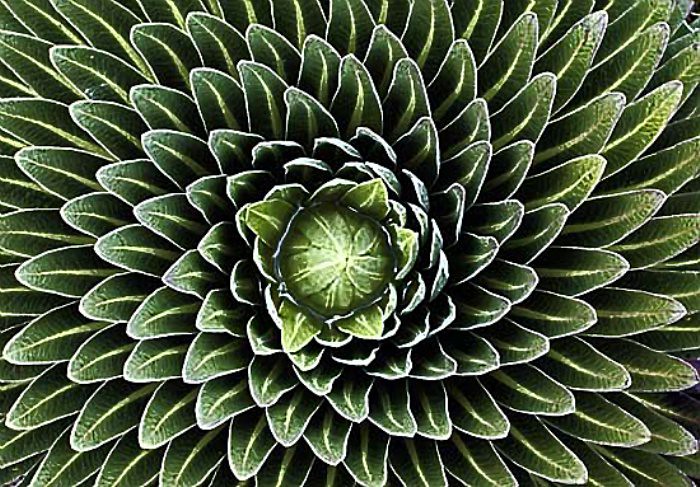
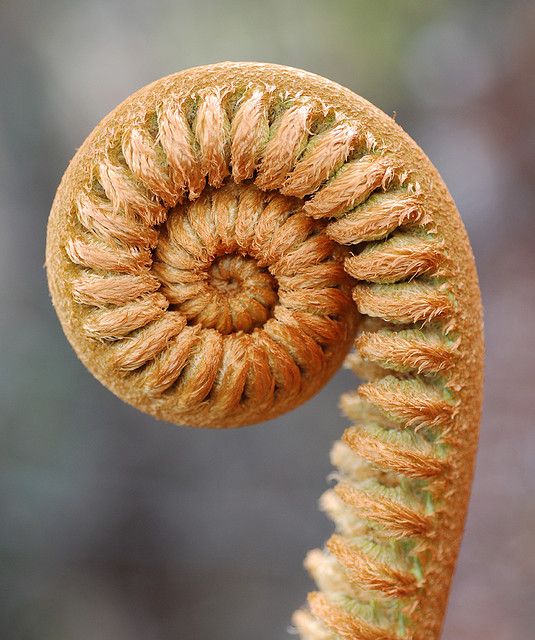
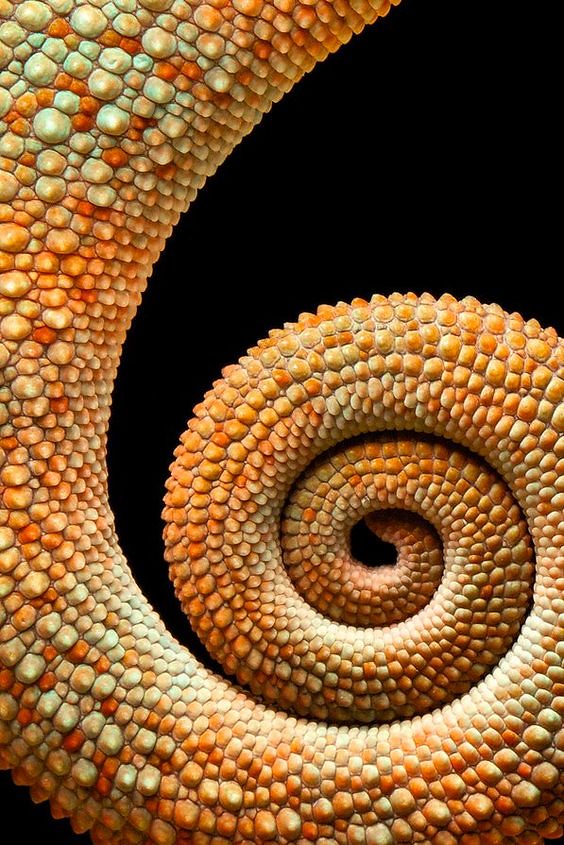
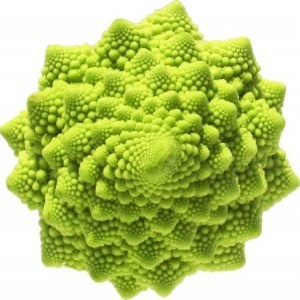

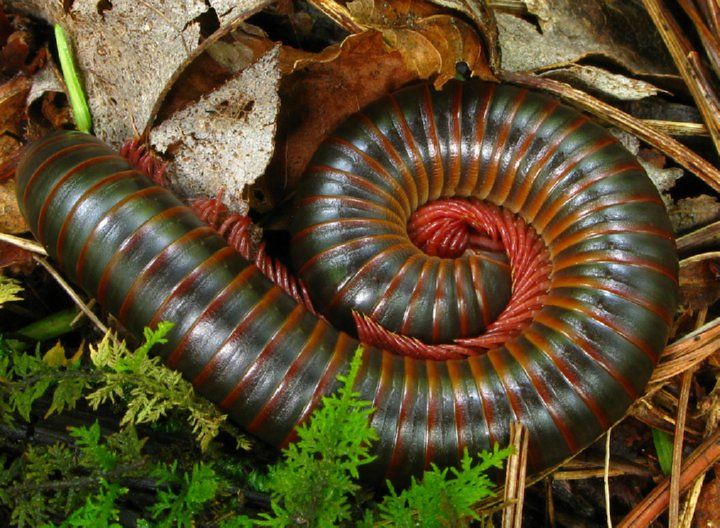
























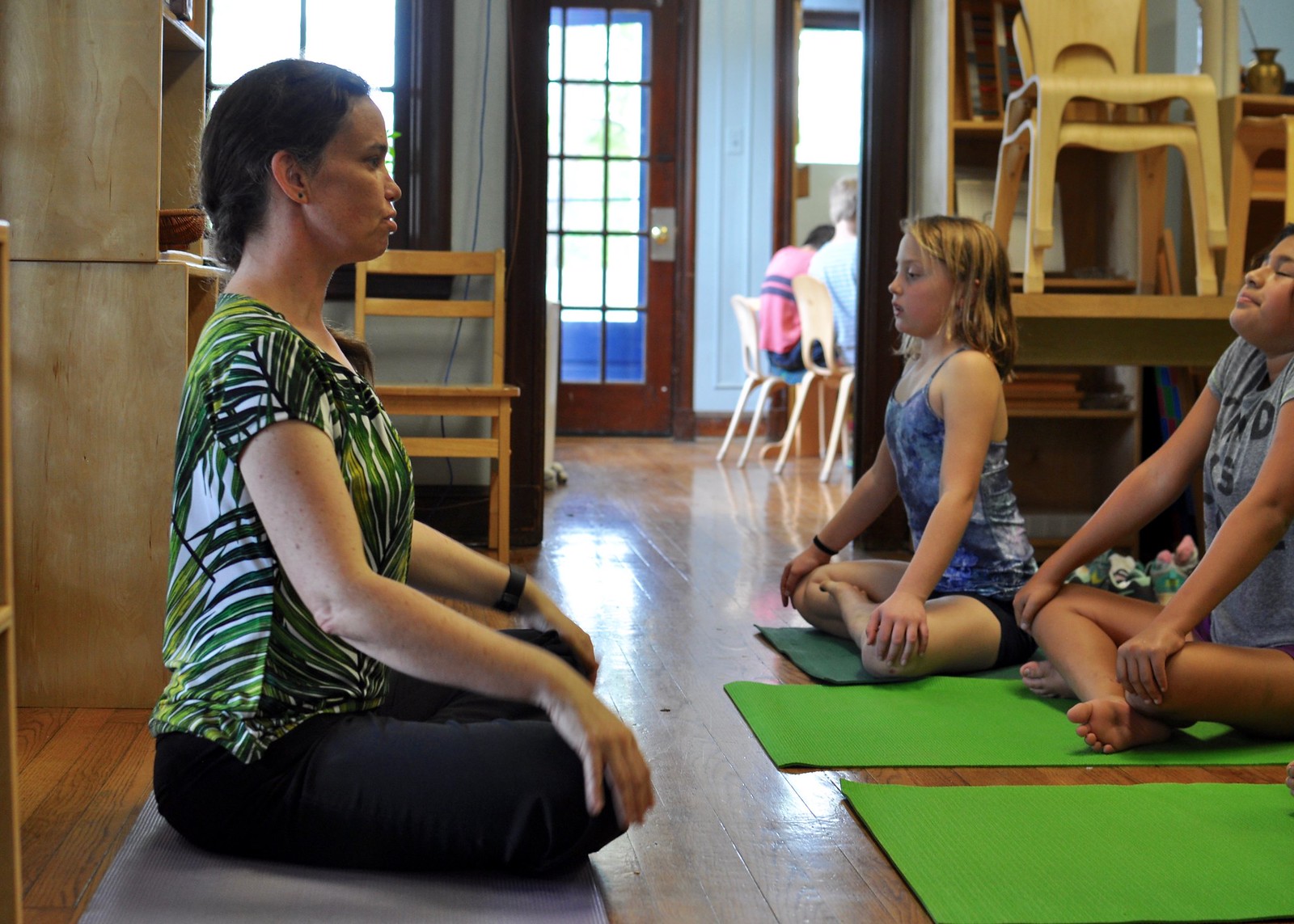

































































































































































































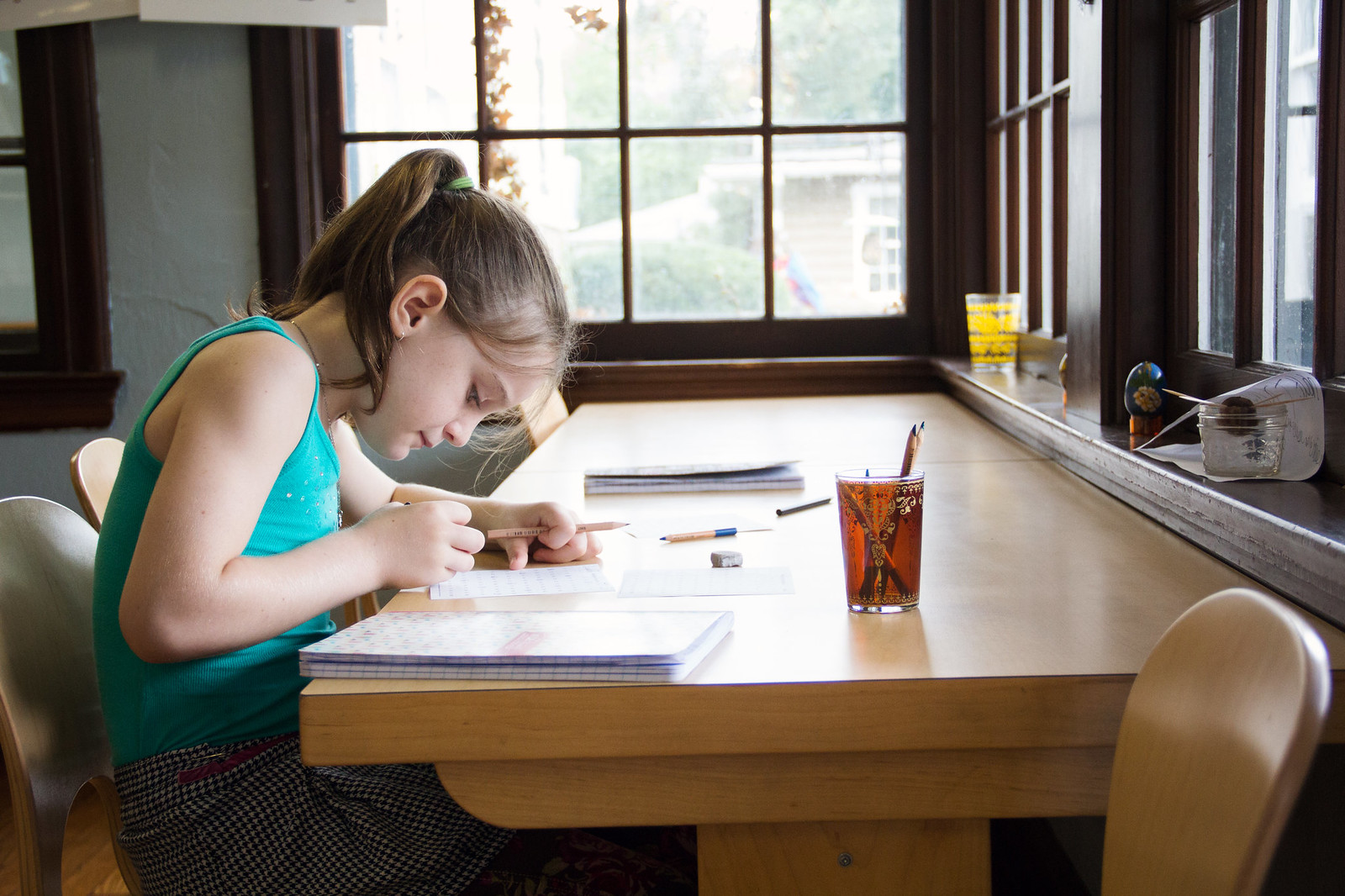
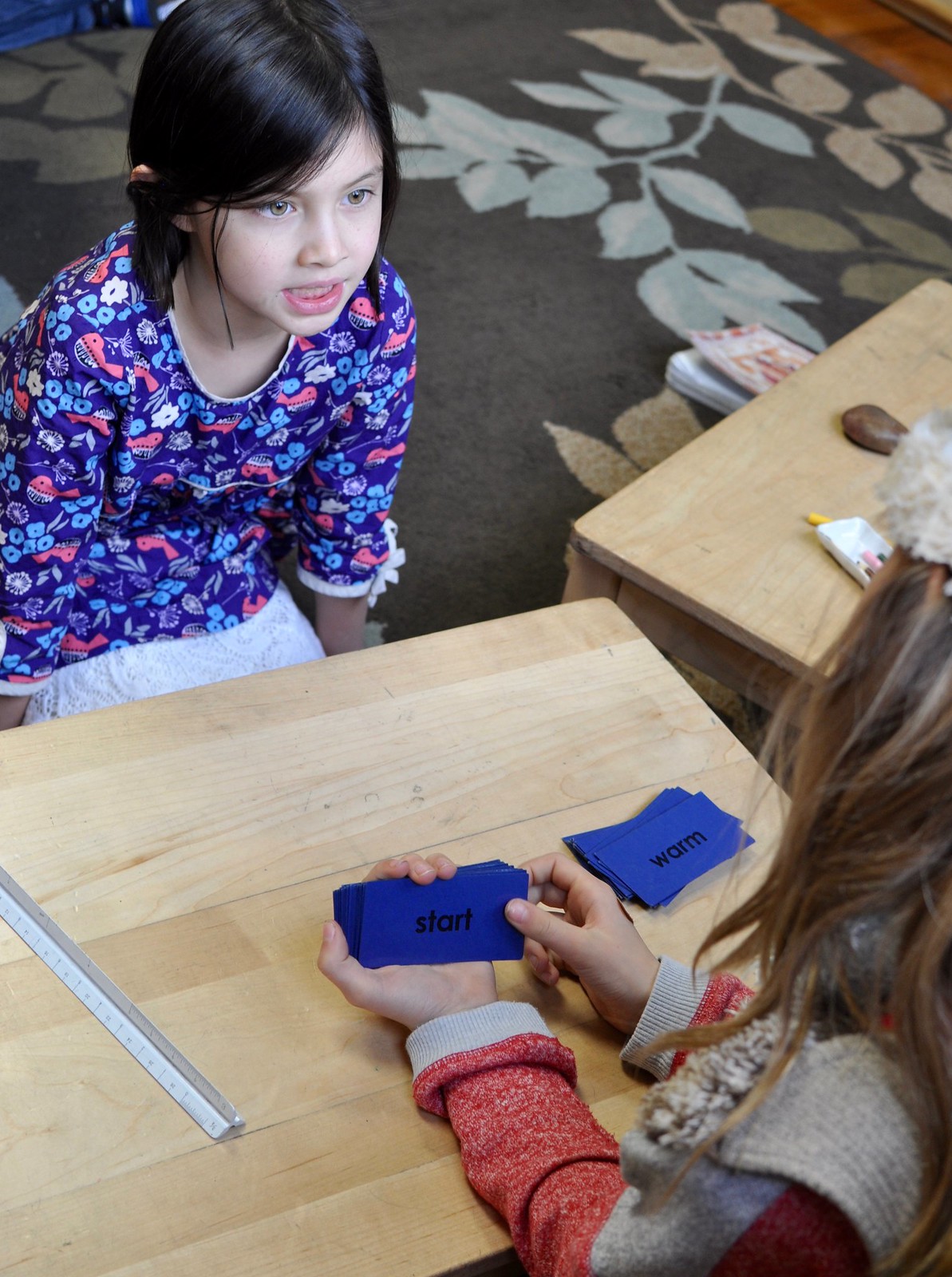
 Every day, rain or shine, the elementary children gather outdoors on the school grounds to enjoy a different type of work: the work of play. While their mornings are filled with lessons and mental work, their afternoons are filled with work of the social realm. It is important to recognize that there is also plenty of this type of work that occurs during work cycles, as children learn to negotiate and work together on projects or work, but here, the social is the main focus.
Every day, rain or shine, the elementary children gather outdoors on the school grounds to enjoy a different type of work: the work of play. While their mornings are filled with lessons and mental work, their afternoons are filled with work of the social realm. It is important to recognize that there is also plenty of this type of work that occurs during work cycles, as children learn to negotiate and work together on projects or work, but here, the social is the main focus. 


 During the second plane of development, which occurs between 6 and 12 years of age, children focus on the exploration of mind and personality, as well as moral and social independence. Playing games during recess fulfills a great deal in this sense; children must navigate what to play, with whom, and how to keep a game going when there is
During the second plane of development, which occurs between 6 and 12 years of age, children focus on the exploration of mind and personality, as well as moral and social independence. Playing games during recess fulfills a great deal in this sense; children must navigate what to play, with whom, and how to keep a game going when there is 



 Self-control, compromise, sportsmanship, and cooperation are all essential to the second plane of development. Children of this plane are also extremely preoccupied with fairness, justice, and following rules.
Self-control, compromise, sportsmanship, and cooperation are all essential to the second plane of development. Children of this plane are also extremely preoccupied with fairness, justice, and following rules.



 According to The Absorbent Mind, a child of the second plane is very focused on right and wrong; "this not only as regards his own actions, but also the actions of others…..moral consciousness is being formed and this leads later to the social sense." (p. 177) What better time to hone these skills than recess?Read more about why kids need recess
According to The Absorbent Mind, a child of the second plane is very focused on right and wrong; "this not only as regards his own actions, but also the actions of others…..moral consciousness is being formed and this leads later to the social sense." (p. 177) What better time to hone these skills than recess?Read more about why kids need recess  My, what a difference a month makes! In February, the elementary building looked like
My, what a difference a month makes! In February, the elementary building looked like 
 All around, the building is looking a lot closer to how it will look once it is finished.
All around, the building is looking a lot closer to how it will look once it is finished.


 Since taking these photos, the above playing field has become a lot more green as sod has been rolled out! Progress is moving so quickly, it's hard to keep photos current!Inside, the clean white walls go so well with the warm wood tones of the flooring and cabinets.
Since taking these photos, the above playing field has become a lot more green as sod has been rolled out! Progress is moving so quickly, it's hard to keep photos current!Inside, the clean white walls go so well with the warm wood tones of the flooring and cabinets.
 Modern lighting hangs from vaulted ceilings and compliments the natural light, high windows, and open floor plans in each classroom. Above: Ms. Megan's Lower Elementary classroom, located on the east side of the building, facing the future playing fields and pool/pool house.
Modern lighting hangs from vaulted ceilings and compliments the natural light, high windows, and open floor plans in each classroom. Above: Ms. Megan's Lower Elementary classroom, located on the east side of the building, facing the future playing fields and pool/pool house. Below: the common room, which will hold couches and chairs and plenty of books.
Below: the common room, which will hold couches and chairs and plenty of books.
 Above and below: the kitchen, before appliances.
Above and below: the kitchen, before appliances.
 Another view of the common room.
Another view of the common room.  The common room and hallway leading to Mrs. Schwind's Lower Elementary classroom.
The common room and hallway leading to Mrs. Schwind's Lower Elementary classroom. Above: the Upper Elementary classroom, which is located in the center of the building and has north-facing windows. Directress Ms. Rebecca is hoping for a moveable chicken coop right outside the windows!
Above: the Upper Elementary classroom, which is located in the center of the building and has north-facing windows. Directress Ms. Rebecca is hoping for a moveable chicken coop right outside the windows! Above: Mrs. Schwind's Lower Elementary classroom, located on the west side of the building.
Above: Mrs. Schwind's Lower Elementary classroom, located on the west side of the building.
 Yes, Villa di Maria now has its very own cherry red fire hydrant!
Yes, Villa di Maria now has its very own cherry red fire hydrant!
 The new pool house and larger area around the pool. The fencing situation will be changing to allow access to bathrooms without entering the main pool area. This will make bathroom trips much easier for Camp Pegnita and for VdM students using the playing field during the school year.
The new pool house and larger area around the pool. The fencing situation will be changing to allow access to bathrooms without entering the main pool area. This will make bathroom trips much easier for Camp Pegnita and for VdM students using the playing field during the school year.
 The pavilion is also coming along nicely!
The pavilion is also coming along nicely!
 The construction crew is optimistic, eager, and enthusiastic about getting these kids into their new building. We are equally excited to see how it all looks in a month!
The construction crew is optimistic, eager, and enthusiastic about getting these kids into their new building. We are equally excited to see how it all looks in a month!


 In Megan's words:
In Megan's words:

 Music is part of the integrated environment and is designed to be an ongoing classroom experience. The children receive music lessons just as they receive lessons in any other subject, and therefore it is not taught in isolation.We want to emphasize that music is accessible to everyone and that it does not require a specialist to teach. The optional group music sessions I offer are not intended to replace the music curriculum that we offer in the Elementary classrooms, but rather to encourage children from different Elementary environments to come together and share in musical expression.
Music is part of the integrated environment and is designed to be an ongoing classroom experience. The children receive music lessons just as they receive lessons in any other subject, and therefore it is not taught in isolation.We want to emphasize that music is accessible to everyone and that it does not require a specialist to teach. The optional group music sessions I offer are not intended to replace the music curriculum that we offer in the Elementary classrooms, but rather to encourage children from different Elementary environments to come together and share in musical expression.
 Since the children are receiving ongoing lessons in music in the classroom, I try to build off those experiences when planning activities for group music. We are currently exploring music and movement, but earlier in the year, we focused on concepts of rhythm, singing as a group, and changing and creating lyrics to songs.This semester, I noticed that many of the children in my classroom were eager to dance (literally had some children dancing throughout the day), so I thought exposing them to different forms of dance would be the perfect way to pair their need for movement with their interests in music.
Since the children are receiving ongoing lessons in music in the classroom, I try to build off those experiences when planning activities for group music. We are currently exploring music and movement, but earlier in the year, we focused on concepts of rhythm, singing as a group, and changing and creating lyrics to songs.This semester, I noticed that many of the children in my classroom were eager to dance (literally had some children dancing throughout the day), so I thought exposing them to different forms of dance would be the perfect way to pair their need for movement with their interests in music.
 What I have really enjoyed about our group music sessions is that it has brought out an unexpected confidence in so many children. I have loved watching everyone collaborate and support each other while learning or creating new rhythms, songs, or dances. I think the larger group setting has provided a safe and comfortable outlet for the children to express themselves without fear of being singled out. When they sing, their voices blend in with the rest of the group and help create the melody. When they dance, they learn from each other and laugh when they make mistakes. I just love seeing how much the children enjoy themselves when they participate in group music.
What I have really enjoyed about our group music sessions is that it has brought out an unexpected confidence in so many children. I have loved watching everyone collaborate and support each other while learning or creating new rhythms, songs, or dances. I think the larger group setting has provided a safe and comfortable outlet for the children to express themselves without fear of being singled out. When they sing, their voices blend in with the rest of the group and help create the melody. When they dance, they learn from each other and laugh when they make mistakes. I just love seeing how much the children enjoy themselves when they participate in group music.

 While we have been learning about dance and dancing just for the sake of dancing, the children have been so eager to show off their moves and create new moves that they have requested to put on some kind of performance or potentially incorporate a performance into the spring concert. We shall see what happens!
While we have been learning about dance and dancing just for the sake of dancing, the children have been so eager to show off their moves and create new moves that they have requested to put on some kind of performance or potentially incorporate a performance into the spring concert. We shall see what happens!






 Thank you, Megan, for opening your classroom to us, and sharing just how special music and dance is in Montessori!
Thank you, Megan, for opening your classroom to us, and sharing just how special music and dance is in Montessori! 


 Sophie explains her introduction to Montessori: "I always wanted an alternative way of education for my child and when I had Lynne I dived into Montessori. I arrived in USA permanently in November 2014. My husband is Chinese and our everyday life is a melting pot of different cultures, languages and food!"
Sophie explains her introduction to Montessori: "I always wanted an alternative way of education for my child and when I had Lynne I dived into Montessori. I arrived in USA permanently in November 2014. My husband is Chinese and our everyday life is a melting pot of different cultures, languages and food!"
 Sophie explains what she misses about France: "I really miss the 'historic weight' of Europe. Everywhere you can find traces of the past. Europe (and France) is a living book of history, art and architecture (my studies were in history, history of art and archeology). France is beautiful. It is 17 times smaller than USA but there is such a variety and beautiful landscapes and little old villages (that is why I show a different place to the children at the end of each class through a book)."42 sites are on the world's heritage list of the UNESCO (cultural and natural sites) and the country is still the first international tourist destination (USA is second). Every place is very different one from the others, and has its own special draws (beach, mountains, countryside, urban cities...) You could take many years to explore a different region every year. The South is turned toward the Mediterranean Sea and is totally part of the Mediterranean culture, especially for food. The North is completely different, turned toward either Germany or Belgium and Netherlands. The Alps area is a high mountain way of living, Brittany is soaking in Celtic traditions with the legend of Camelot and King Arthur and the round table; the Southwest holds thousands of prehistoric archeological sites and painted caves. Everything is on a much smaller scale than here. And the countryside still offers a slow way of living, very close to nature (especially with the return of the young generation to a more natural way of living). And the cities are so full of history..."
Sophie explains what she misses about France: "I really miss the 'historic weight' of Europe. Everywhere you can find traces of the past. Europe (and France) is a living book of history, art and architecture (my studies were in history, history of art and archeology). France is beautiful. It is 17 times smaller than USA but there is such a variety and beautiful landscapes and little old villages (that is why I show a different place to the children at the end of each class through a book)."42 sites are on the world's heritage list of the UNESCO (cultural and natural sites) and the country is still the first international tourist destination (USA is second). Every place is very different one from the others, and has its own special draws (beach, mountains, countryside, urban cities...) You could take many years to explore a different region every year. The South is turned toward the Mediterranean Sea and is totally part of the Mediterranean culture, especially for food. The North is completely different, turned toward either Germany or Belgium and Netherlands. The Alps area is a high mountain way of living, Brittany is soaking in Celtic traditions with the legend of Camelot and King Arthur and the round table; the Southwest holds thousands of prehistoric archeological sites and painted caves. Everything is on a much smaller scale than here. And the countryside still offers a slow way of living, very close to nature (especially with the return of the young generation to a more natural way of living). And the cities are so full of history..."
 Sophie's passion for France is evident in the way she teaches the language. The children are absolutely captivated listening to her! It is beautiful to hear the language roll off her tongue, and in turn, hear the children practice the new sounds within their own mouths. There are many differences in the sounds of the French language versus the English language; Sophie recognizes the importance of exposing the children to these sounds as early and often as possible, as well as having them practice making these unique sounds. Plus, she makes it fun with games and a bit of mystery.
Sophie's passion for France is evident in the way she teaches the language. The children are absolutely captivated listening to her! It is beautiful to hear the language roll off her tongue, and in turn, hear the children practice the new sounds within their own mouths. There are many differences in the sounds of the French language versus the English language; Sophie recognizes the importance of exposing the children to these sounds as early and often as possible, as well as having them practice making these unique sounds. Plus, she makes it fun with games and a bit of mystery. Above, Sophie has the children draw cards out of a bag that name in French the different parts of the body they have been learning. Then, the children take turns saying their word, and finding the corresponding body part on the small wooden figure.
Above, Sophie has the children draw cards out of a bag that name in French the different parts of the body they have been learning. Then, the children take turns saying their word, and finding the corresponding body part on the small wooden figure.

 Though Sophie misses many, many things about France (including the food, family and friends, the French culture, the cheeses - 1,200 of which have names- the bakeries, the walkability, the theatre, the French book shops, the arts... ) she assures us that she is enjoying her time here: "As long as I can refill my "French tank" every year, I enjoy living here. I feel so lucky to be part of Villa community. To see all those children growing up and the feeling to give the best to my daughter is priceless."
Though Sophie misses many, many things about France (including the food, family and friends, the French culture, the cheeses - 1,200 of which have names- the bakeries, the walkability, the theatre, the French book shops, the arts... ) she assures us that she is enjoying her time here: "As long as I can refill my "French tank" every year, I enjoy living here. I feel so lucky to be part of Villa community. To see all those children growing up and the feeling to give the best to my daughter is priceless."


 To learn more about Sophie's French lessons, be sure to check out
To learn more about Sophie's French lessons, be sure to check out 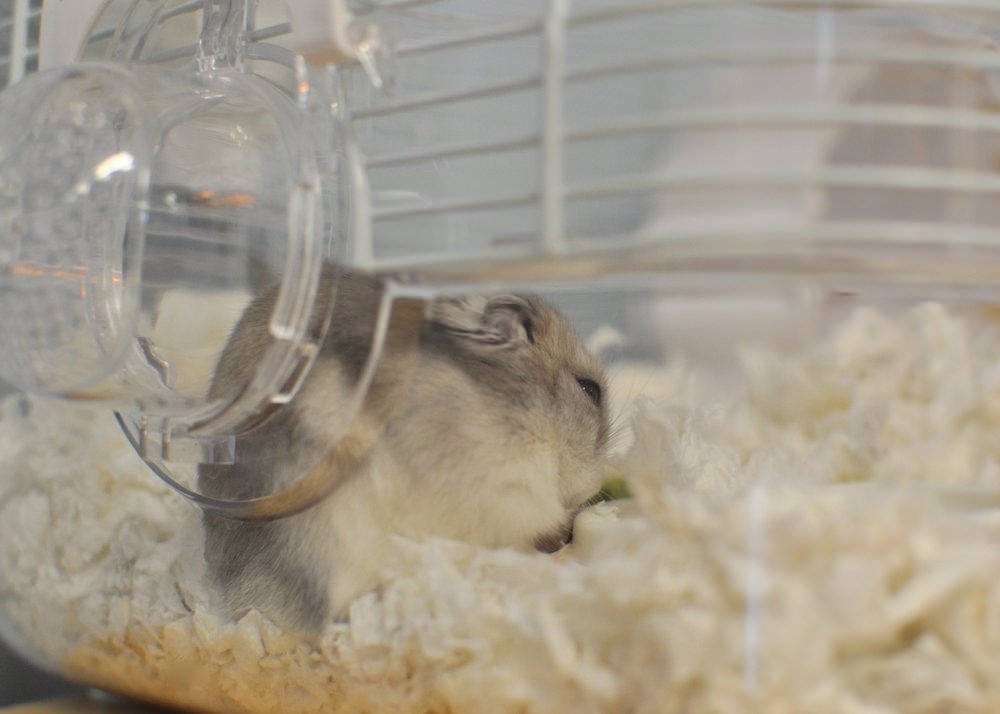



 Coral, the axolotl (originally left out of this post - Sorry, Coral!)
Coral, the axolotl (originally left out of this post - Sorry, Coral!) Aside from being cute and interesting to watch, pets bring a lot to a classroom. Having pets to care for helps teach responsibility, compassion, empathy, and an understanding and respect for other living things. Pets teach children to value life other than their own, in addition to teaching them about the natural growth and life cycles of many different species which they can observe on a daily basis! Another benefit is the stress reduction that occurs as a result of observing and petting the animals, from which both the children and the animals can benefit.
Aside from being cute and interesting to watch, pets bring a lot to a classroom. Having pets to care for helps teach responsibility, compassion, empathy, and an understanding and respect for other living things. Pets teach children to value life other than their own, in addition to teaching them about the natural growth and life cycles of many different species which they can observe on a daily basis! Another benefit is the stress reduction that occurs as a result of observing and petting the animals, from which both the children and the animals can benefit.
 The children at Villa di Maria care for their pets every day, including feeding them and providing them with fresh water, grooming them, and making sure their cages are clean and healthy. Most of this happens with the assistance of the adults in the classroom, of course, to make sure no one gets lost or hurt through over-excited handling. Two- and three-year-olds still need some guidance in how to be gentle, after all!
The children at Villa di Maria care for their pets every day, including feeding them and providing them with fresh water, grooming them, and making sure their cages are clean and healthy. Most of this happens with the assistance of the adults in the classroom, of course, to make sure no one gets lost or hurt through over-excited handling. Two- and three-year-olds still need some guidance in how to be gentle, after all!





 Especially if a child has no experience at home with pets, exposure to a wide range of animal life in the classroom can benefit a child: from touching, observing, caring for, and making connections to the natural world, to understanding the delicacy and uniqueness of all life.
Especially if a child has no experience at home with pets, exposure to a wide range of animal life in the classroom can benefit a child: from touching, observing, caring for, and making connections to the natural world, to understanding the delicacy and uniqueness of all life.


 My experience was not out of the ordinary; the beauty of Montessori materials is often the first thing a new observer to the Montessori classroom notices and comments on. There are rich blue geometric solids, a wide array of brightly colored materials - including the pink tower and the bead frame - and even more natural wood materials, including chairs and shelves in a warm natural wood hue, as well as trays of the same rich tones. Montessori materials are made from natural materials when possible: brass, wood, wicker, cotton, metal, and glass. All of these materials provide a multi-sensory experience for the child, and part of that is the visual appeal that results in a calm, prepared learning environment. The beauty of the Montessori classroom lies both in its simplicity and its thoughtful set-up; each uncluttered space reflects a tranquil, peaceful invitation for learning.
My experience was not out of the ordinary; the beauty of Montessori materials is often the first thing a new observer to the Montessori classroom notices and comments on. There are rich blue geometric solids, a wide array of brightly colored materials - including the pink tower and the bead frame - and even more natural wood materials, including chairs and shelves in a warm natural wood hue, as well as trays of the same rich tones. Montessori materials are made from natural materials when possible: brass, wood, wicker, cotton, metal, and glass. All of these materials provide a multi-sensory experience for the child, and part of that is the visual appeal that results in a calm, prepared learning environment. The beauty of the Montessori classroom lies both in its simplicity and its thoughtful set-up; each uncluttered space reflects a tranquil, peaceful invitation for learning.

 Above: One Hundred Flowers, by Harold Feinstein - a beautiful book from Lower Elementary Directress Anna Schwind's personal collection. Books and materials like these, that highlight the beauty and delicacy of the natural world, draw young learners in and encourage them to respect and take awe in the natural world around them.
Above: One Hundred Flowers, by Harold Feinstein - a beautiful book from Lower Elementary Directress Anna Schwind's personal collection. Books and materials like these, that highlight the beauty and delicacy of the natural world, draw young learners in and encourage them to respect and take awe in the natural world around them. 

 Real glasses, plates, silverware, and utensils not only encourage real work, they are also beautiful all stacked up neatly on the shelves! Imagine the difference if they were plastic sippy cups instead - not only would they be treated less carefully, they would surely contribute to sensory overload! Yes, sometimes these items break, but if nothing ever broke, how would a child learn to treat things with care? Children in the Montessori classroom treasure their materials and learn to treat them with care, especially after the Directress models handling the materials slowly, carefully, and respectfully, former Primary Directress Robyn Milos says, "As if they were made of gold."
Real glasses, plates, silverware, and utensils not only encourage real work, they are also beautiful all stacked up neatly on the shelves! Imagine the difference if they were plastic sippy cups instead - not only would they be treated less carefully, they would surely contribute to sensory overload! Yes, sometimes these items break, but if nothing ever broke, how would a child learn to treat things with care? Children in the Montessori classroom treasure their materials and learn to treat them with care, especially after the Directress models handling the materials slowly, carefully, and respectfully, former Primary Directress Robyn Milos says, "As if they were made of gold."




 Surrounding a child with beauty in his daily life has an incredible impact on his absorbent mind:"The child has a different relation to his environment from ours... the child absorbs it. The things he sees are not just remembered; they form part of his soul. He incarnates in himself all in the world about him that his eyes see and his ears hear." (The Absorbent Mind, p.56)While there is artwork hung in a Montessori classroom (at eye-level for the children, not the adults), it is not overwhelming or distracting. There are not brightly colored alphabet charts, big cartoon animal borders, or bulletin boards filled with reminders and charts. Many walls are bare, except for the occasional piece of artwork or class photo. And for good reason;
Surrounding a child with beauty in his daily life has an incredible impact on his absorbent mind:"The child has a different relation to his environment from ours... the child absorbs it. The things he sees are not just remembered; they form part of his soul. He incarnates in himself all in the world about him that his eyes see and his ears hear." (The Absorbent Mind, p.56)While there is artwork hung in a Montessori classroom (at eye-level for the children, not the adults), it is not overwhelming or distracting. There are not brightly colored alphabet charts, big cartoon animal borders, or bulletin boards filled with reminders and charts. Many walls are bare, except for the occasional piece of artwork or class photo. And for good reason; 

 Natural light is also ideal in the Montessori environment. Classrooms are flooded with sunlight streaming in from different directions depending on the time of day, supplemented with the warm glow of lamps placed throughout. It truly is a comfortable, appealing place to be.
Natural light is also ideal in the Montessori environment. Classrooms are flooded with sunlight streaming in from different directions depending on the time of day, supplemented with the warm glow of lamps placed throughout. It truly is a comfortable, appealing place to be.



 While conflict certainly occurs in the primary classroom, it is generally quite easy to resolve and move on from and very often involves simple diversion, which is appropriate for this age group. In the lower and upper elementary classrooms, however, normal peer conflict is a bit more complicated. This is because of the differences in planes of development. Children in the lower elementary are entering a developmental plane that includes a strong desire to collaborate and cooperate with their peers. As a result, much of the work they do in the classroom and outside of the classroom involves small groups working together, as seen in these photos. This naturally leads to normal conflict. It is important that we (adults, whether we are parents, staff, or community members) view this conflict as an opportunity for growth rather than a hassle or disruption.
While conflict certainly occurs in the primary classroom, it is generally quite easy to resolve and move on from and very often involves simple diversion, which is appropriate for this age group. In the lower and upper elementary classrooms, however, normal peer conflict is a bit more complicated. This is because of the differences in planes of development. Children in the lower elementary are entering a developmental plane that includes a strong desire to collaborate and cooperate with their peers. As a result, much of the work they do in the classroom and outside of the classroom involves small groups working together, as seen in these photos. This naturally leads to normal conflict. It is important that we (adults, whether we are parents, staff, or community members) view this conflict as an opportunity for growth rather than a hassle or disruption.

 Some adults, for whom the elementary years may have been difficult socially, may remember social conflict as something that happened behind the backs of teachers, or even as incidents that were brushed aside by adults in order to finish a lecture to an entire classroom full of students sitting in rows of desks. However, in the Montessori classroom, the social piece is built into the curriculum. It is addressed during classroom meetings, it is dealt with moment-to-moment as the conflicts occur. Megan Eilers, lower elementary directress, explains, "Conflict is not just an afterthought; we stop what we are doing many times a day to address a conflict immediately. It's just part of what we do in the Montessori classroom."“Do we believe and constantly insist that cooperation among the peoples of the world is necessary in order to bring about peace? If so, what is needed first of all is collaboration with children.... All our efforts will come to nothing until we remedy the great injustice done the child, and remedy it by cooperating with him. If we are among the men of good will who yearn for peace, we must lay the foundation for peace ourselves, by working for the social world of the child.” (International Montessori Congress, 1937)
Some adults, for whom the elementary years may have been difficult socially, may remember social conflict as something that happened behind the backs of teachers, or even as incidents that were brushed aside by adults in order to finish a lecture to an entire classroom full of students sitting in rows of desks. However, in the Montessori classroom, the social piece is built into the curriculum. It is addressed during classroom meetings, it is dealt with moment-to-moment as the conflicts occur. Megan Eilers, lower elementary directress, explains, "Conflict is not just an afterthought; we stop what we are doing many times a day to address a conflict immediately. It's just part of what we do in the Montessori classroom."“Do we believe and constantly insist that cooperation among the peoples of the world is necessary in order to bring about peace? If so, what is needed first of all is collaboration with children.... All our efforts will come to nothing until we remedy the great injustice done the child, and remedy it by cooperating with him. If we are among the men of good will who yearn for peace, we must lay the foundation for peace ourselves, by working for the social world of the child.” (International Montessori Congress, 1937)